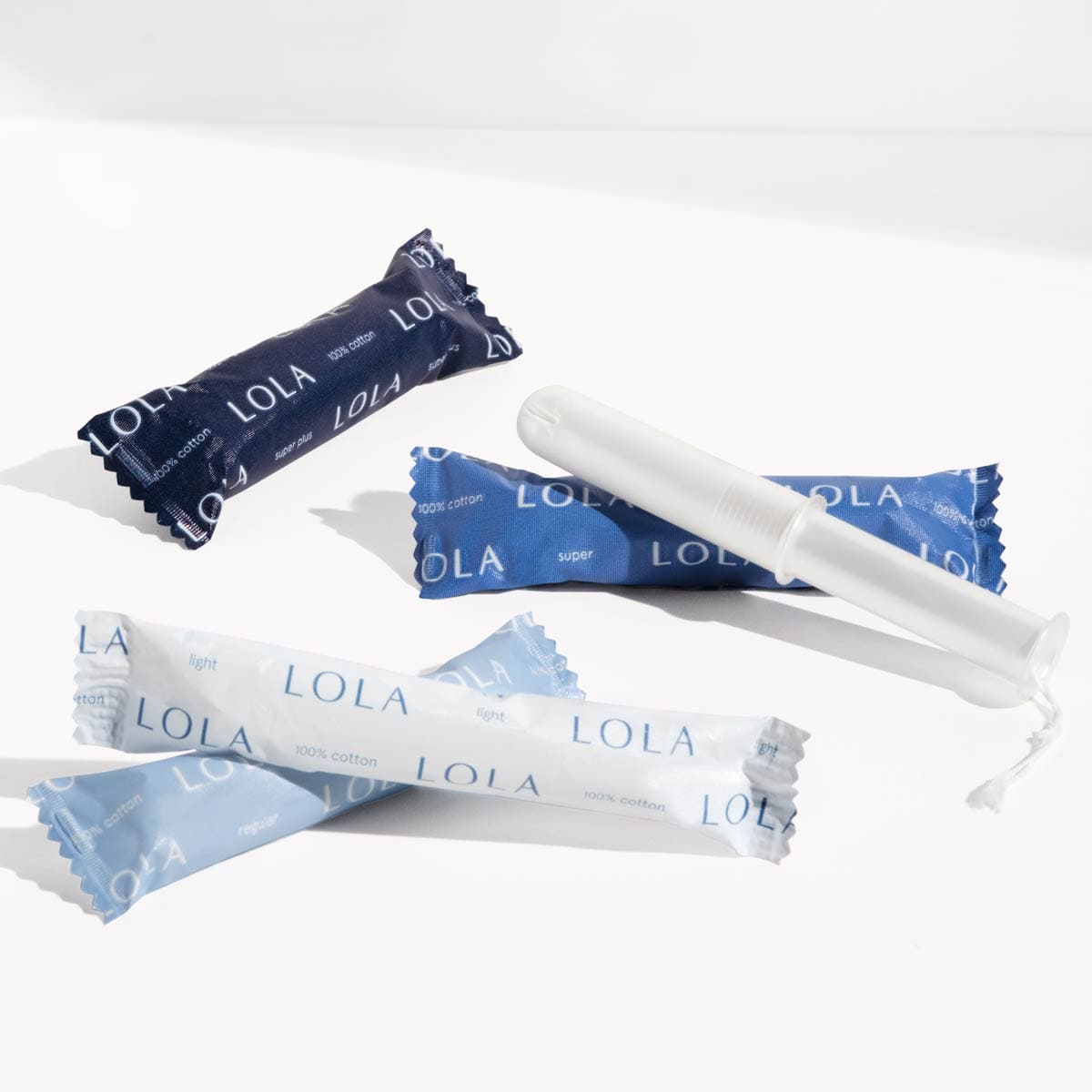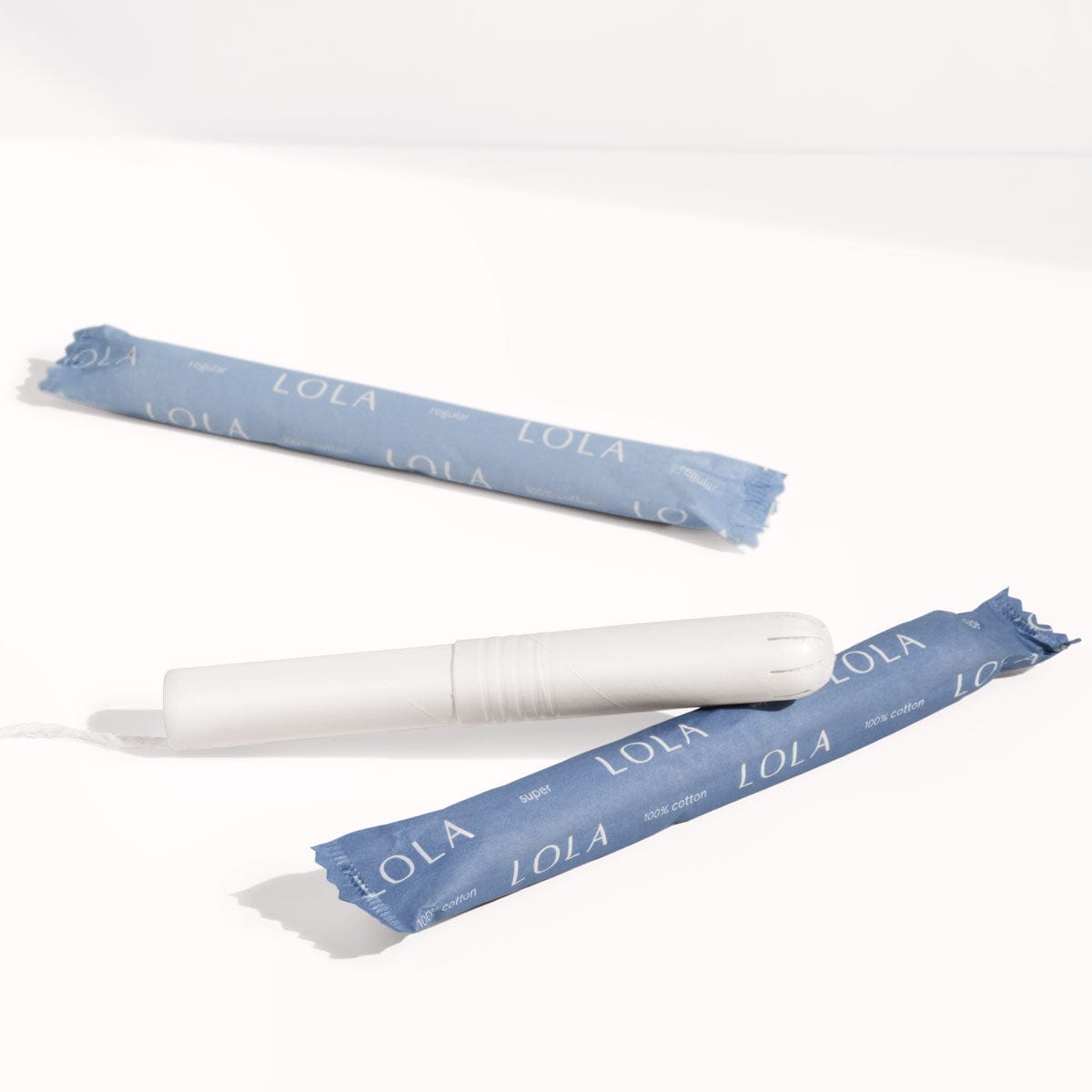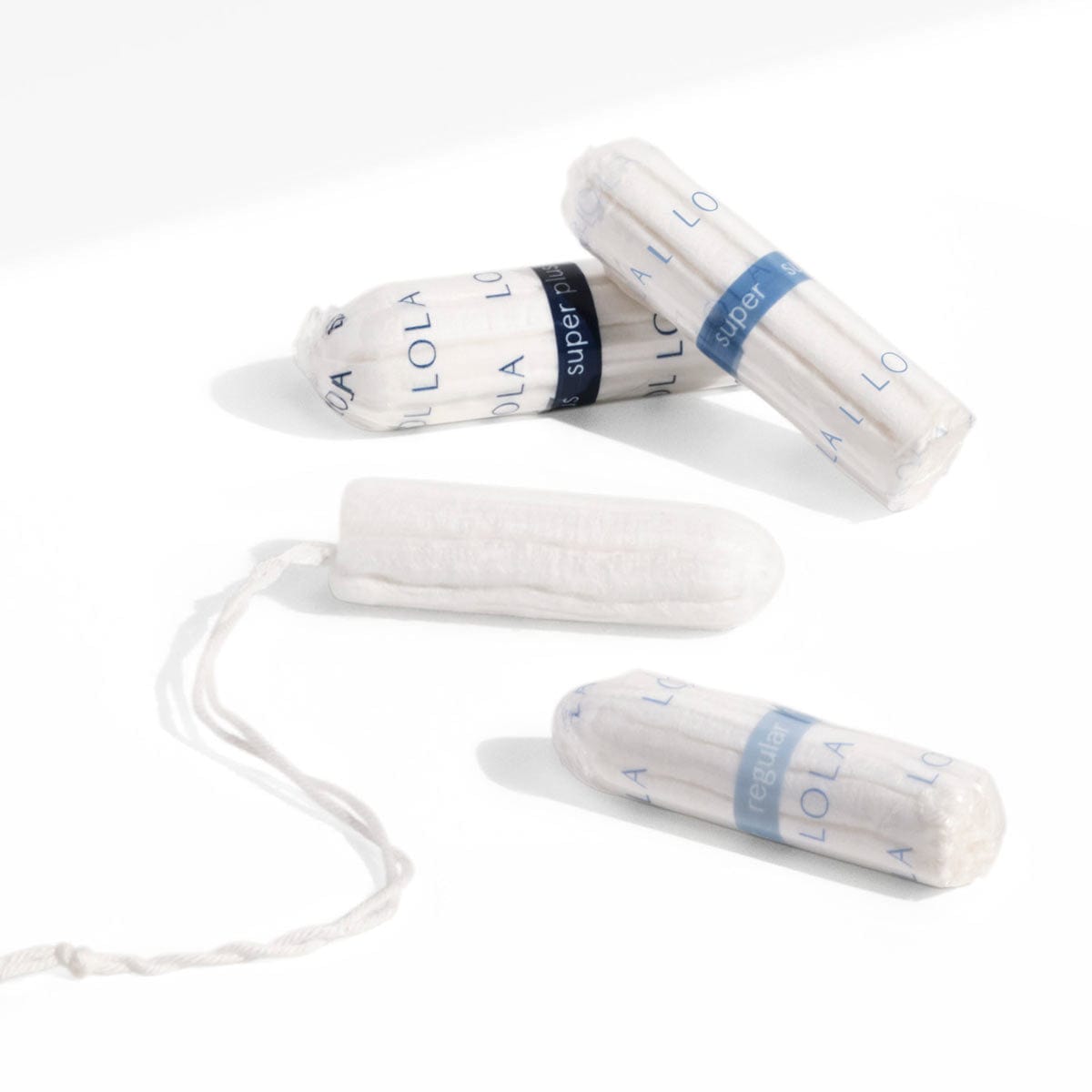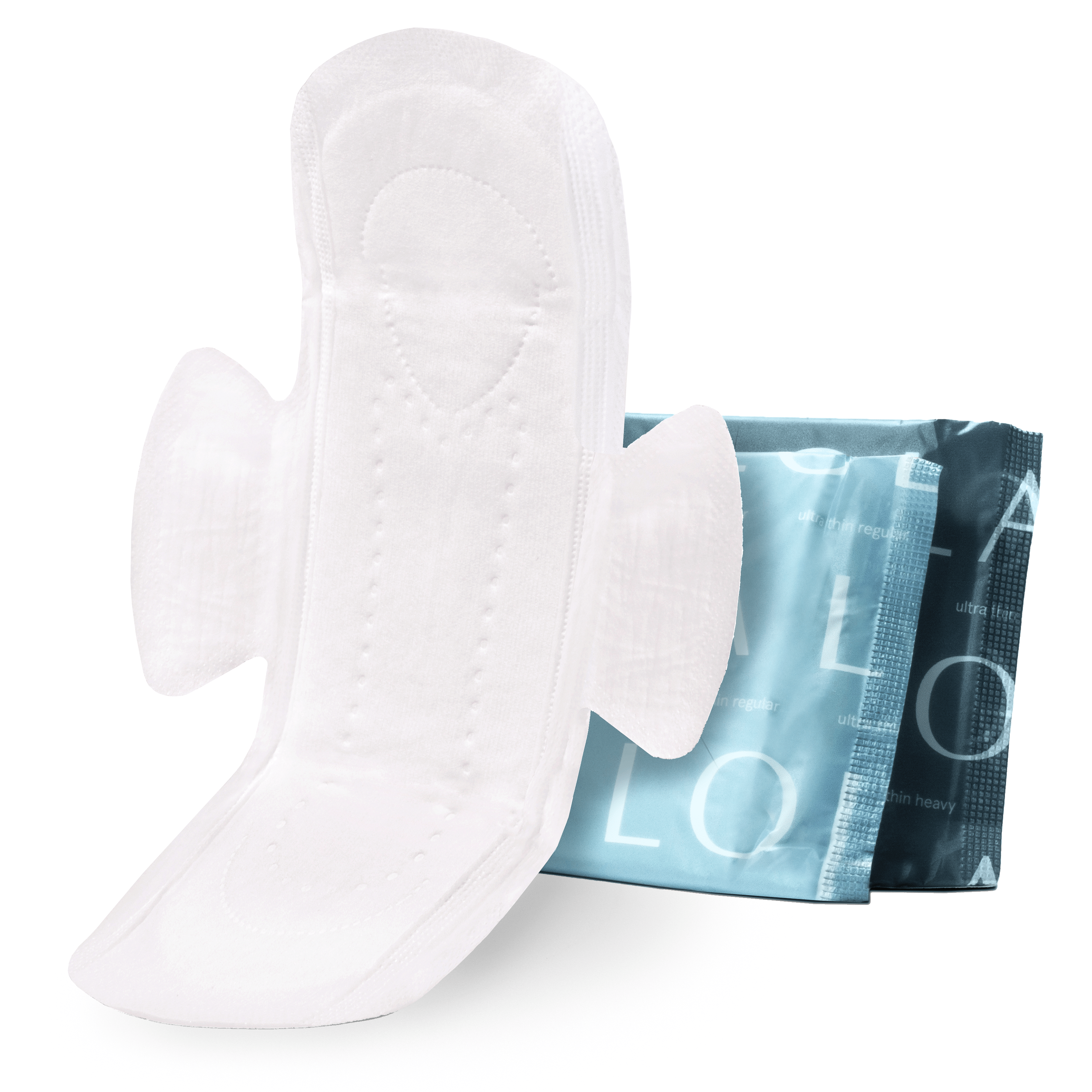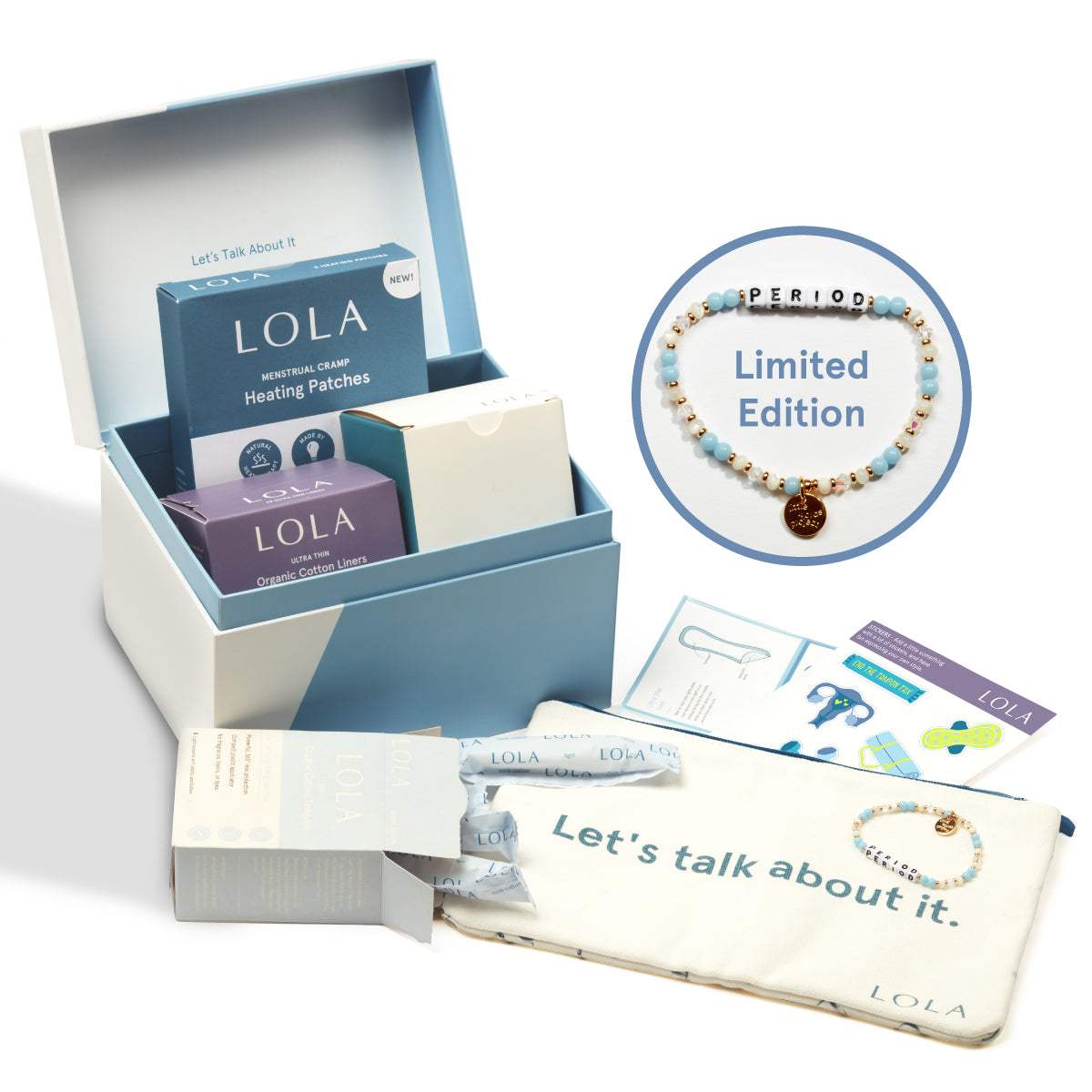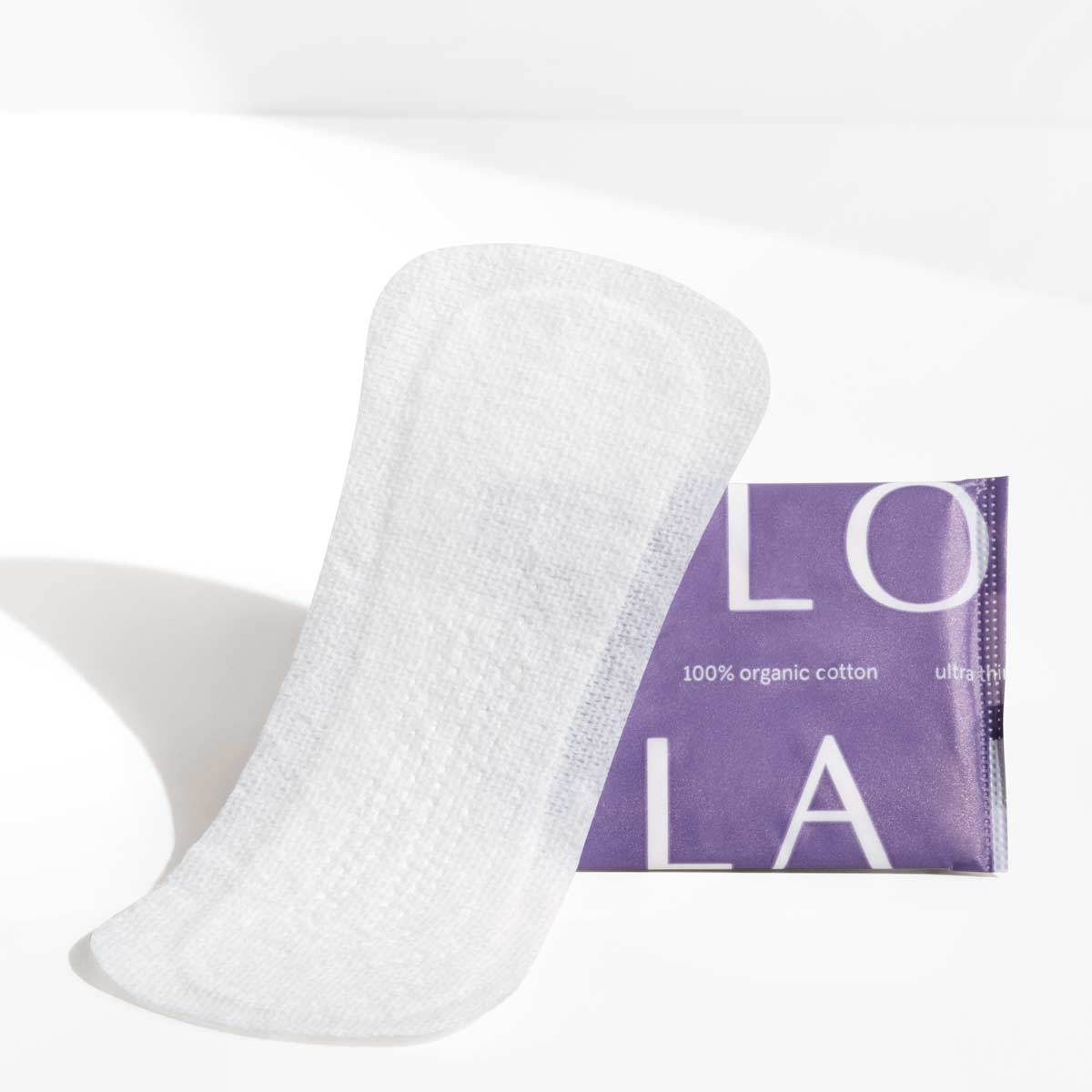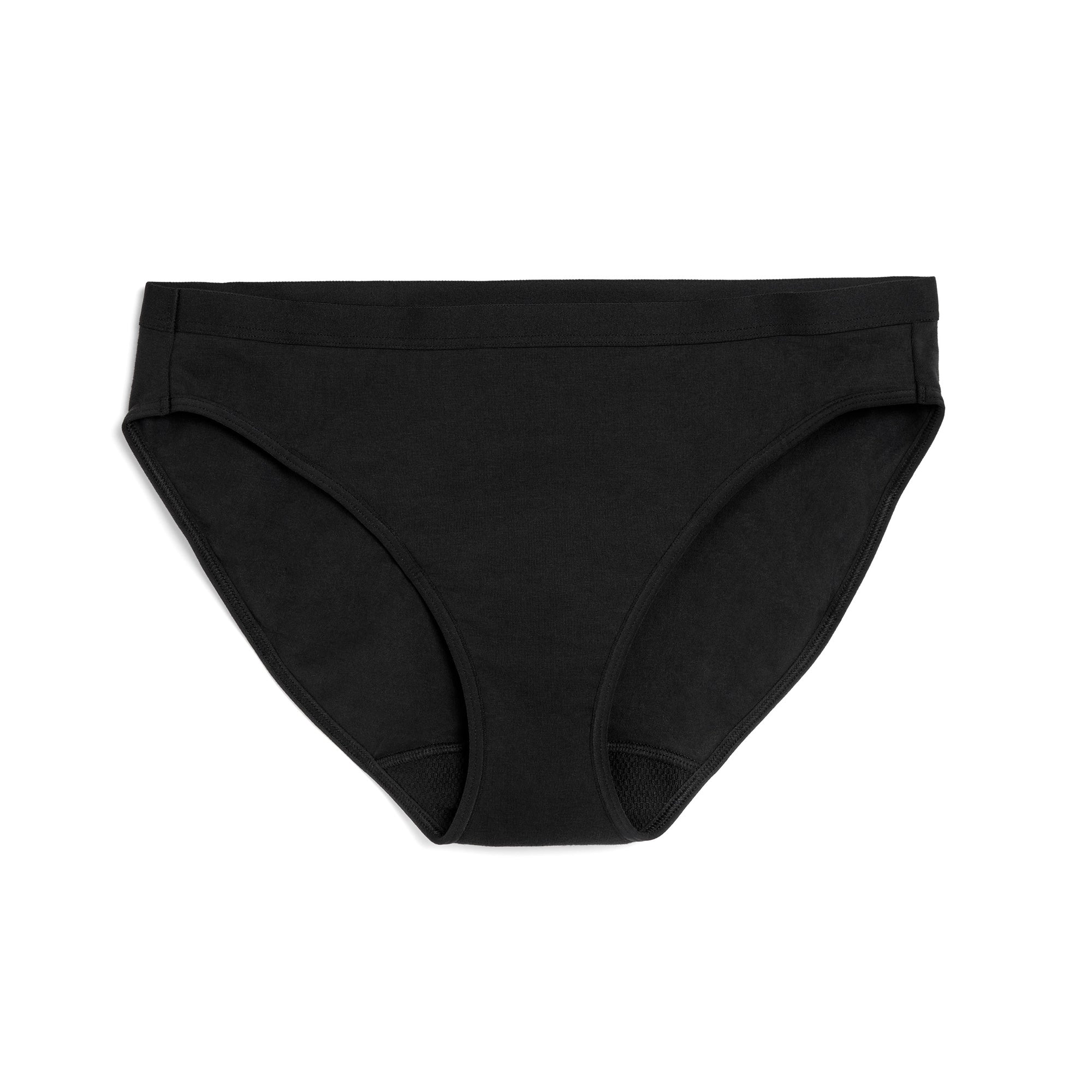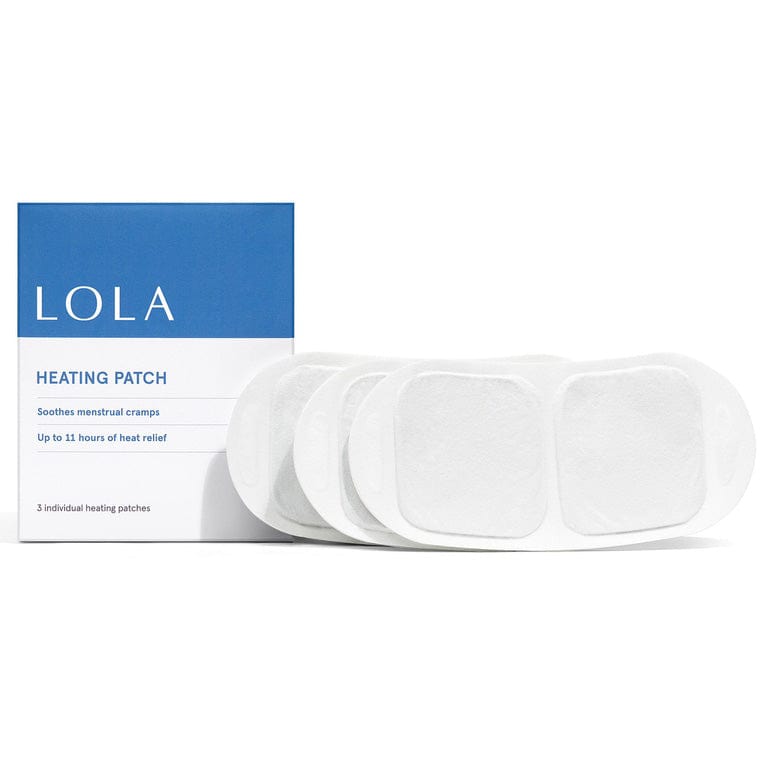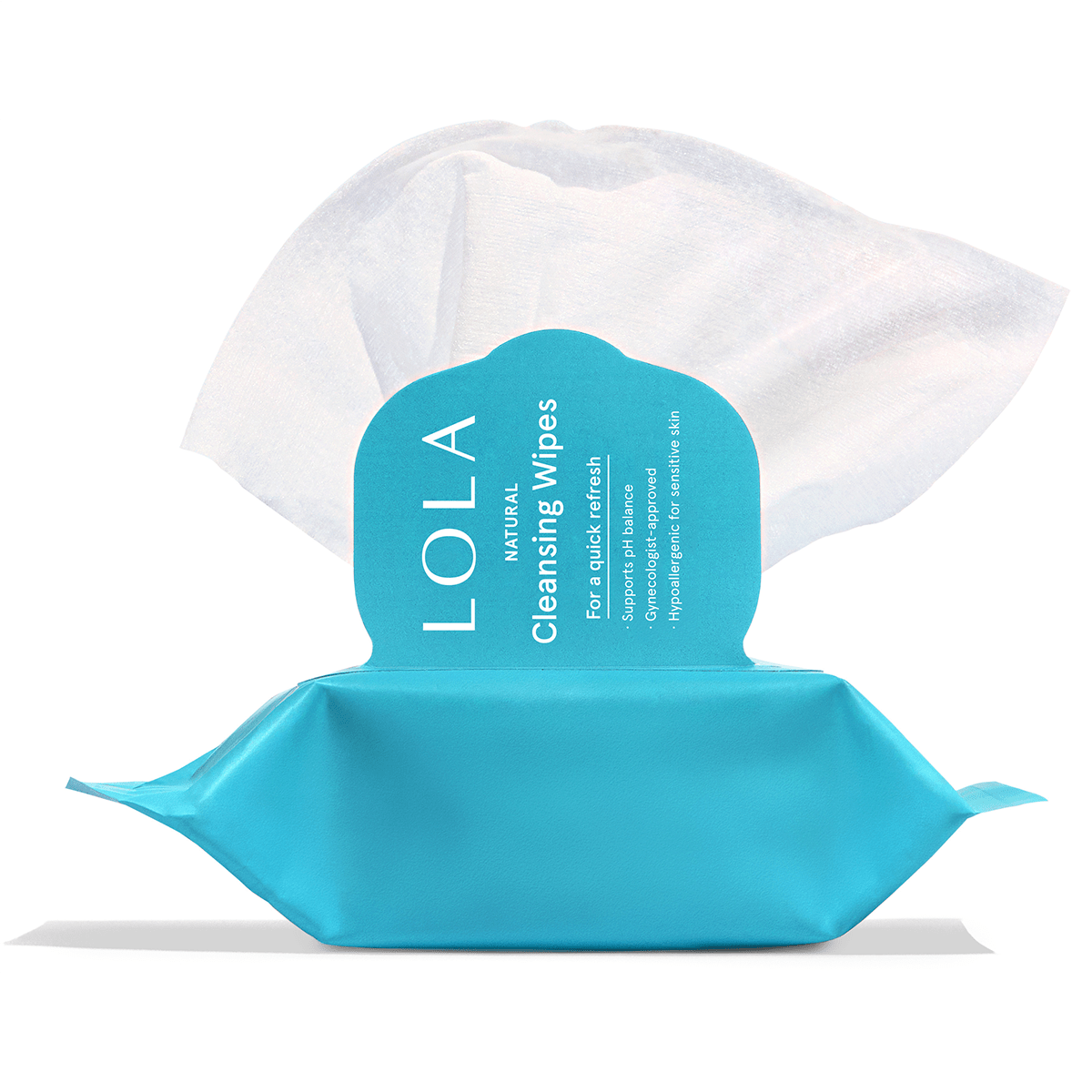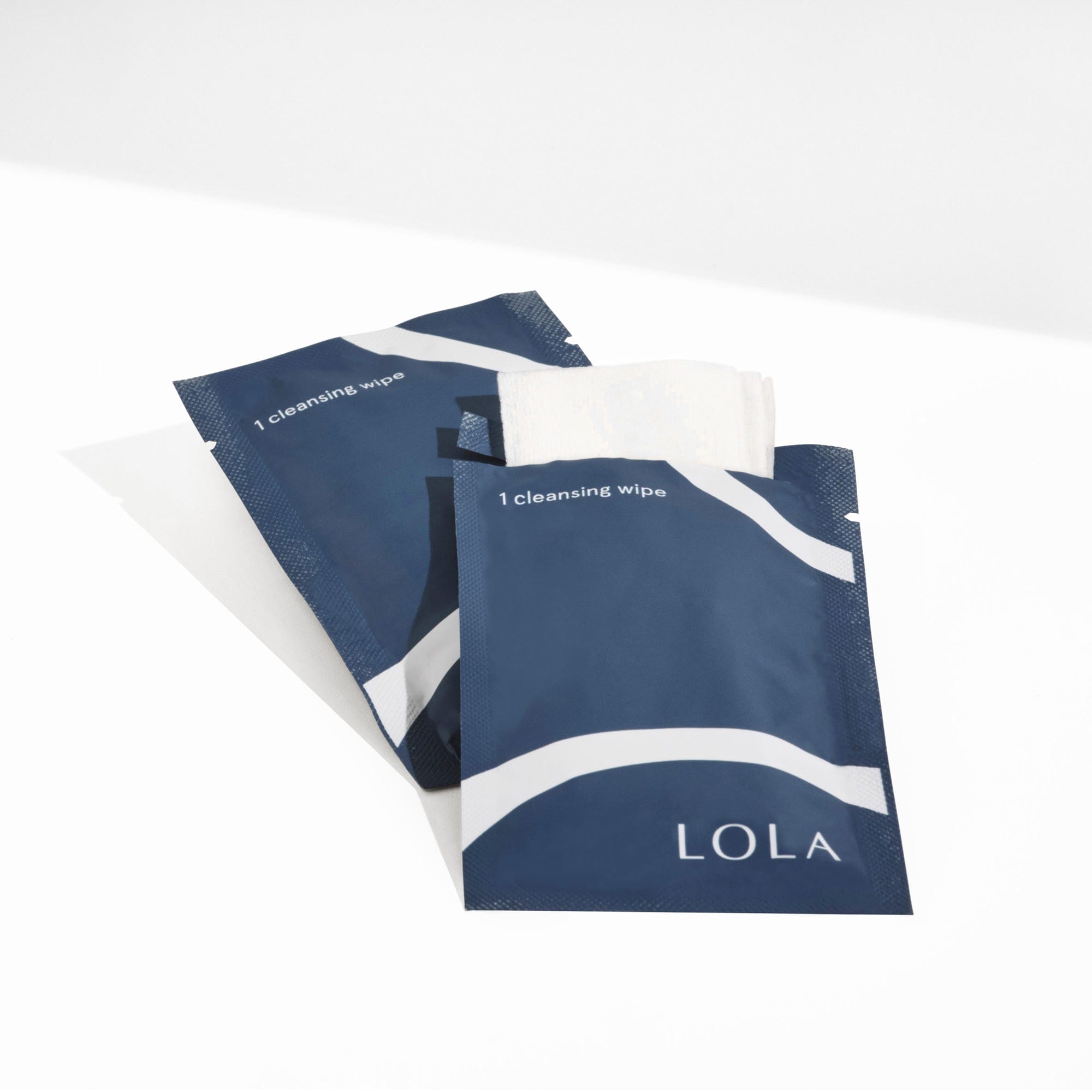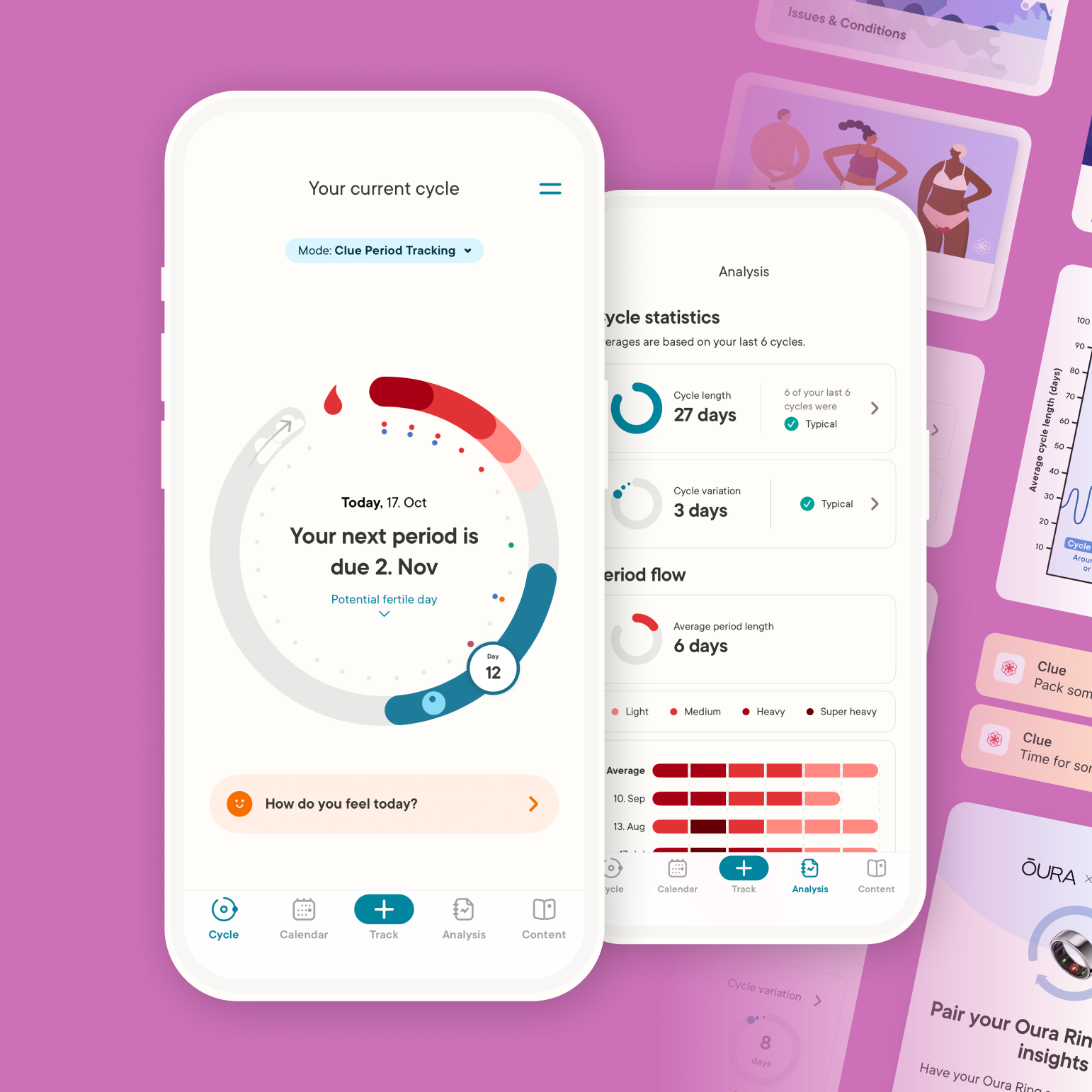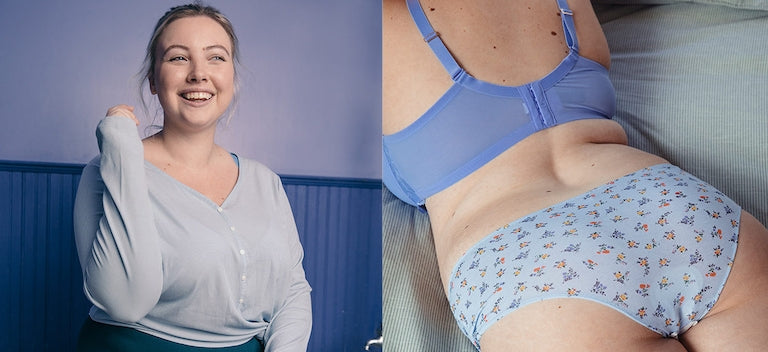It's been three years since we introduced LOLA's first menstrual pad, made with our signature 100% organic cotton. Today, we're thrilled to announce our biggest innovation yet: a new, patent-pending pad with an ergonomic shape, designed to actually fit your underwear for next-level protection.
And it was no easy task. We spoke with 2,300+ women across the country, dissected every menstrual pad on the market, dove into the latest absorbent hygiene research, created a new organic cotton supply chain in the U.S., and built our own machine to manufacture it.
So, what makes our new menstrual pad so special?
1. Innovative hourglass shape
Our pad was designed to really fit your body. Unlike pads with a traditional rectangular shape, ours has a unique hourglass silhouette for less chafing, less bunching, and extra coverage where you're prone to leaks.
2. Organic cotton topsheet and core
Our pad is hypoallergenic, made with 100% organic cotton (from top to bottom) to keep you comfortable. We skip the toxins, dyes, and hidden plastics. Because, more often than not, synthetic materials are to blame for pads that feel bulky, irritate your skin, and feel like a diaper.
3. Powerful leak protection
Our pad features a multi-layer core that taps into the natural powers of organic cotton to disperse fluid effortlessly, and without bulk. The cherry on top is our moisture-wicking topsheet, which pulls fluid down into the core and prevents it from resurfacing. So you stay drier for longer.
Our copywriter, Annie, sat down with Monica Belsito and Sarah Wagner " two of our powerhouse product developers at LOLA " for an inside look at their innovation process.
Read excerpts from the interview below.

How we got started
ANNIE: So, how long has this been in the making?
MONICA: We first launched our pads in November of 2016. And ever since then, we've been learning from our community: why they love our pads made with 100% organic cotton, specifically around that unbeatable comfort and breathability.
SARAH: One of the reasons that brands use plastics, and other synthetic fibers, is to make their pads super absorbent. But we know that those materials can also lead to skin irritation and that bulky, diaper feeling. We wanted to develop a pad that was super absorbent " without having to rely on synthetic materials.
ANNIE: Got it. So the idea was to create a natural pad that could stand on its own against the synthetic guys, in terms of performance?
MONICA: To start, yes. We also knew that our adhesive could use some improvement, and that bunching was still an issue that led to leaks. And so, when we went back to the drawing board to help solve all of these identified, known areas of improvement, we realized that shape was a huge area to focus on.
ANNIE: And you weren't expecting that?
MONICA: I think when we first embarked on the journey [of redesigning our pads], we kind of figured that materials and performance improvement would be the way to win. But we didn't realize how much would be solved by changing the shape of our pads.
So, it's been kind of an ongoing learning process since day one of our pads launch, but this project kicked off more officially in April 2018.
We didn't realize how much would be solved by changing the shape of our pads.
ANNIE: What was the first step in the process?
MONICA: The first step was listening to our consumer base, then reaching out to women all over the country, even those who don't already use our pads. We also had to make sure that we had the team and infrastructure in place to capture that feedback.
Because, you know, qualitative feedback is one thing, but it has to be quantifiable to justify an investment in innovation. And this was a serious investment, from a time and budgetary point of view. So that was step one. Step two was finding the right partners to bring that vision to life.
SARAH: Right. Because while we're product developers, we don't have the technical skills to actually develop it in-house. So, finding the right people to work with on R&D, and then manufacturing " that was a very critical step.
An innovation in the making
ANNIE: How did you get connected to the right people?
MONICA: So, we are members of the industry group for nonwovens, called INDA. And INDA hosts a lot of different conferences and educational opportunities for its members, one of which is Hygienix.
That's kind of where it all began, actually. Because you meet people at this one conference every year " whether it be natural fibers manufacturers, converters of plastics and synthetic fibers, brands like us " everyone is at this conference.
ANNIE: Everyone who's anyone! (Laughs)
MONICA: Seriously. Everyone who's anyone in absorbent hygiene is at this conference. That's where we were introduced to, actually, a synthetic fiber converter who was so impressed with what LOLA was doing " but unfortunately, couldn't work with us because he didn't do anything with natural materials. And after the conference, he was talking with the founder of the manufacturing partner we chose, and suggested that they reach out to us.
ANNIE: Oh, wow. I didn't realize that they sought us out!
MONICA: Yeah, so networking matters, you know? And it was kind of serendipitous at the time because we had been trying for years to figure out a way of triangulating all these different people from the supply chain together to help build a shorter, secure, organic cotton supply chain in the United States. And that didn't exist yet.
So not only did we innovate in terms of building a product that we knew would be better for women, but we actually had to create a sustainable supply chain here in the U.S. to feed our machine"¦ which we also built from the ground up, here in the United States.
ANNIE: Just so I get all the ABCs here, what did the supply chain look like at the time?
MONICA: Basically, organic cotton feminine care production had, in the past, been completely isolated to Europe. And a lot of that is a function of a supply-and-demand equation because before LOLA came to market, there just wasn't a huge demand for organic cotton feminine care [in the states].
ANNIE: But that doesn't mean that all organic cotton is grown overseas, right?
SARAH: Right. Our organic cotton is grown in Texas, but until recently, we didn't have a means of converting that cotton into menstrual pads without relying on overseas manufacturing partners.
Why we built our own machine
ANNIE: So, at what point did you realize it was time to build a machine of our own? Was that something you'd considered all along, or did a unique opportunity present itself?
SARAH: I think from the get-go, we knew that we had limited options, in terms of current manufacturers of feminine hygiene products that know and are willing to work with natural fibers.
And then, from an intellectual property standpoint, we wanted to develop something entirely new that we could protect with a patent. So, we were hesitant to work with a contract manufacturer " a place that manufactures for all sorts of brands " because that could put any potential patent of ours at risk.
ANNIE: And what about our pads, exactly, makes it impossible for them to be manufactured from your run-of-the-mill machine?
SARAH: Couple of things. First, we realized as we were looking at all of the players in this category is that the majority of pads, if not all, have straight up-and-down cores. Even pads that appear to have an hourglass shape are really the product of embossing or dyes used to create that illusion.
ANNIE: That's wild. So why hasn't any brand tried to innovate that shape until now?
The faster you can run the machine, the more efficient you can be"¦ and that's what drives a lot of innovation decisions for big brands.
SARAH: It really comes down to efficiency. The faster you can run the machine, the more efficient you can be"¦ and that's what drives a lot of innovation decisions for big brands.
By owning our own machine, we were able to set our own efficiency and quality metrics. We could build a machine that was unique to our design. So pad came first, machine came second, versus the other way around.

Looking back and to the future
ANNIE: What has your favorite part of this process been? And what are you, personally, the most excited about?
SARAH: I really enjoyed the research portion and better understanding the consumer, the category, the white space. And then, actually testing our prototypes with consumers and getting to hear their feedback firsthand.
It's been so gratifying to see our design truly deliver against what we had set out to do. I'm excited to bring our pad into the world officially, and keep hearing more from our community.

ANNIE: Okay, follow up question: what was the best reaction that you got?
SARAH: The best was when a consumer told us that our pad solved all of the problems she never knew she had with her previous pads. That was very eye-opening and inspiring. We've been using that quote a lot internally to rally the whole organization around this breakthrough innovation.
MONICA: It's crazy to me to think that because of a few people that I met three years ago at a conference, we've been able to create an entirely new supply chain, build a machine " and create a lot of jobs in the process.
The best was when a consumer told us that our pad solved all of the problems she never knew she had.
To bring an industry back to the United States, one that hasn't been here for decades"¦ that's pretty incredible. So, I'm pretty proud of that.
